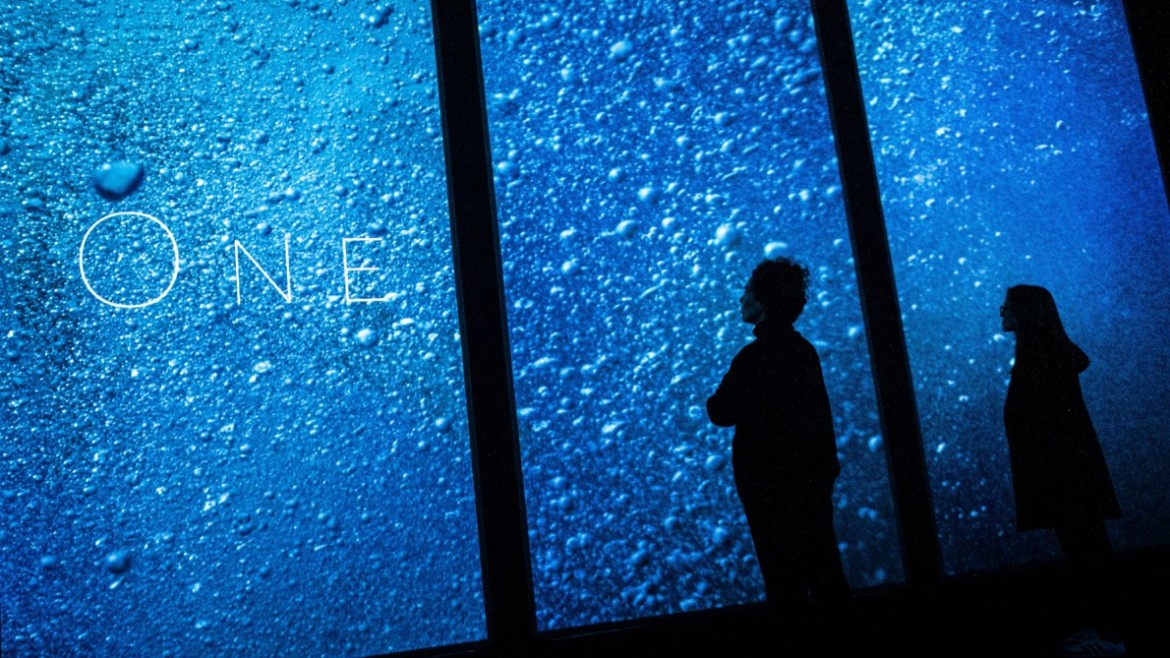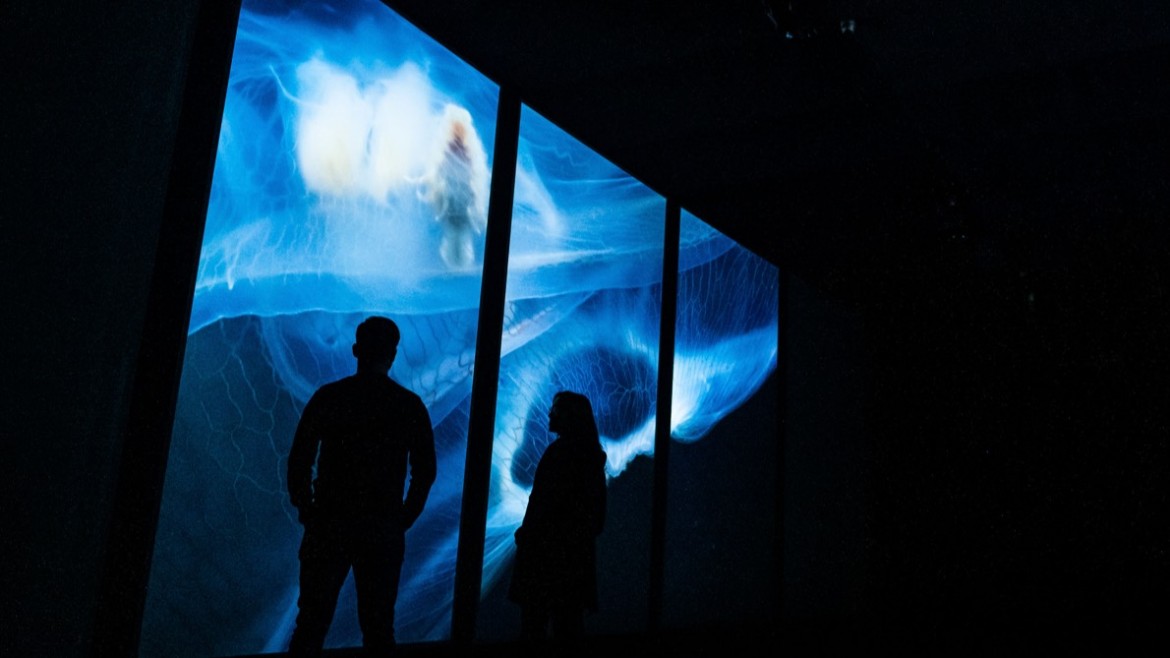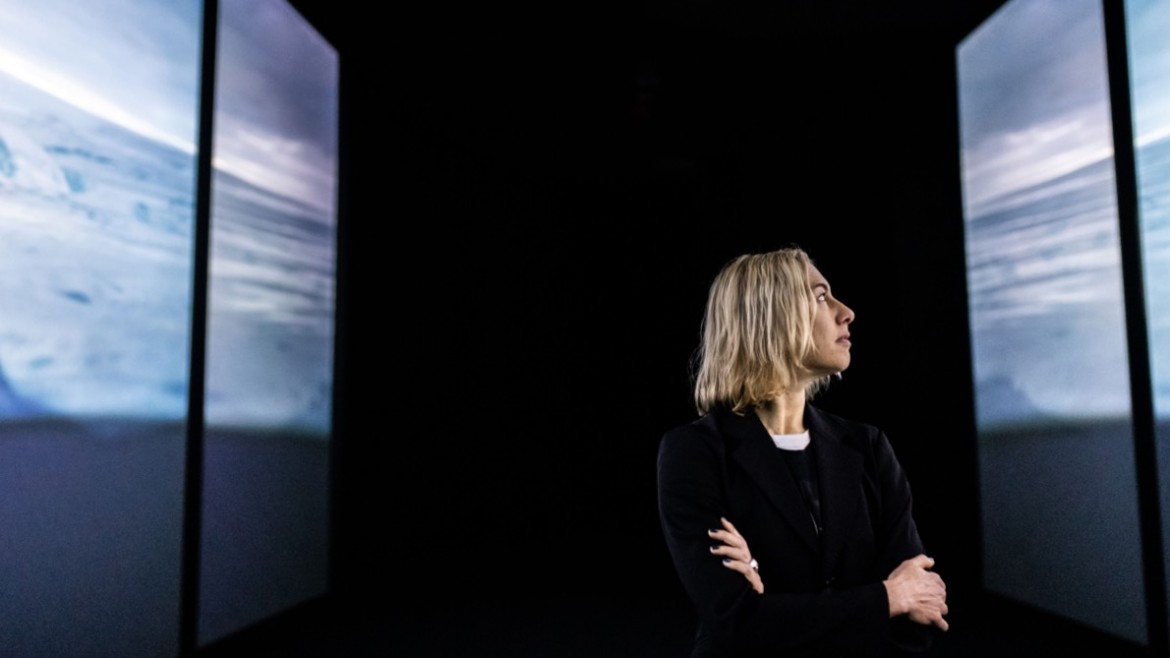One is a remarkable series of films shown as part of a 3-year installation at the Lisbon Oceanarium in Portugal, that revolves around our relationship with the ocean. Shot in the Azores, Madeira and the mainland on large format cameras, the films take us on a spiritual journey of discovery over and under the waves, as we meet the creatures of the deep and the people who live & work on the water.
Halo provided full Picture and Sound Post Production.
Commercial Director and Post Coordinator: Will Garbutt says…
“Logistically, One was a challenge to post. Firstly it is presented across a series of 10 large ‘portrait’ cinema screens culminating in a 12K presentation format. This meant we had to re-create this in the grade suite in order for Katherine Jamieson to treat. Due to the sheer size of the files, we chose to grade in DaVinci Resolve as it was the only system that could handle the raw material. The audio was also completely bespoke, with a 24 speaker array that had to be built in a basement in London to replicate the exhibition space in Lisbon. The end result however is extraordinary. If you are in Lisbon in the next 3 years, I urge you to see it”
Dubbing Mixer: Rich Addis says…
“From the first meeting with Maya, it was clear that this was going to be as big a technical challenge as it was creative. ‘ONE’ is so far removed from a “normal” cinema listening experience, that we had to completely rethink how to approach the technical setup and mix. 24 channels of audio across four layers of height (floor, wall, tops, and overheads) meant that this mix wasn’t going to happen in any conventional immersive audio formats, such as Dolby Atmos, which has only two ‘layers’ of height.
A normal mix or listening environment is generally calibrated for a central ‘sweet spot’ – the point in the room to which the speakers are aligned, to give the best experience. The space in the Oceanarium is more like a long corridor, so rather than a sweet spot, we decided to calibrate the room to the centre line, or the path the audience would take through the space.
The upshot of this, is that you can no longer expect that every viewer will have the same experience wherever they are in the room; each will predominantly hear whichever speaker set they are closest to, rather than an equally balanced blend of all speakers. This was either a problem or a novel feature, depending on how you looked at it!
The vast majority of the sounds were supplied or tracklayed as either mono or stereo, so the challenge was to work out how to ensure that the entire space felt covered and cohesive; how do we upmix or pan to ensure even coverage, without dead spots?
To achieve this, I built a Pro Tools session with bussing that broke the 24 speaker channels down into subsets, which could be addressed with ‘standard format’ panners, allocated as Sends rather than Outputs (7.1 SDDS panners to pan across the 5 screen channels on each wall and out into the room; various Quad panners for both vertical and horizontal planes; multiple 7.1.2 panners with multiple upmix paths to cater for music and access the overheads; and various mono and stereo sends to address individual channels and the separate LFEs as required).
Up to this stage, it was entirely hypothetical as to whether this layout would work, or if it would sound like a horrible phasey mess… The only solution was to build it, so that’s what we did (at about 1/4 scale) in the basement of Halo’s Dean Street premises, using Genelec 8010 and 8020 loudspeakers.
Once built, I could start to place the existing elements from the Offline cut into the space, map out the sound FX requirements, test panning methodologies, and start working Andy Cowton’s score and sound design into the space.
The additional FX which I added were designed to subtly underpin the score. ‘ONE’ is not a ‘traditional’ natural history film, so nothing too on the nose was added; mainly ambiences, winds and drones to add a sense of space and location and to fill out the room, as well as individual spot FX on animals and wave crashes as required. So much of the power of the waves was delivered by the immense size of the visuals and the score, therefore the soundtrack often underplays the scale of the visuals so as not to cause the experience to be overwhelming. I concentrated mainly on the high frequency sounds of winds and water spray to add subtle detail, which could sit at reasonably low level but still cut through atop the weight of the score and drones.
Much of the score and design was stereo, so I relied heavily on upmixers such as Penteo 16 Pro and Nugen Halo Upmix, coupled with The Cargo Cult’s Spanner plugin. These upmixers give such a great, even coverage, as well as the flexibility and control to adjust what goes where. Defaulting to the ‘standard’ 7.1.2 upmix was far too directional; you definitely felt that one area was the ‘focus’ area (where the screen/C channel is located), so the upmix process was far from set-and-forget. I used multiple up mixer instances for stems, and used Spanner heavily throughout to build movement and interest, post-upmix. The main goal of the London premix was to establish workflow, set up panning, and set relative levels, then once in Lisbon, we’d mix out into the dynamic range afforded by the larger space.
Once on site, I was able to plug my Pro Tools session output directly into the BSS network via Dante Virtual Soundcard. The projector playback system (a network of Blackmagic Hyperdecks) wasn’t able to slave to Pro Tools timecode, so mixing was completed with picture playback on a local screen.
For reviews with full projection, Pro Tools had to be able to slave to the Hyperdecks. One Hyperdeck played out video with linear timecode on the audio tracks, which we converted from SDI to analogue audio using a Blackmagic Mini Converter. This was then input to the Mac via a Focusrite 2i2 and converted to MIDI timecode using Lockstep, and finally passed to Pro Tools via the IAC MIDI driver in MacOS. Pro Tools was then set to chase MTC, and, amazingly, it worked like a dream!
After EQ calibration of the speaker set using Smaart, the premixed audio sat pretty well in the space, and we were able to widen the dynamics greatly once we got a sense of the ambient noise levels in the space.
Having overcome the numerous technical and creative challenges that this project presented, we were able to sculpt and finesse a hugely dynamic and awe inspiring soundtrack; a fitting accompaniment to Maya’s astonishing visuals.”
Post Supervisor: Jim Long
Director: Maya De Almeida Araujo
Editor: Maya De Almeida Araujo
Colourist: Katherine Jamieson
Technical Director for Post: James Kersley Cregeen
Dubbing Mixer: Rich Addis
Halo Executive Producer: Will Garbutt
Watch ‘The Making Of ONE’ here




